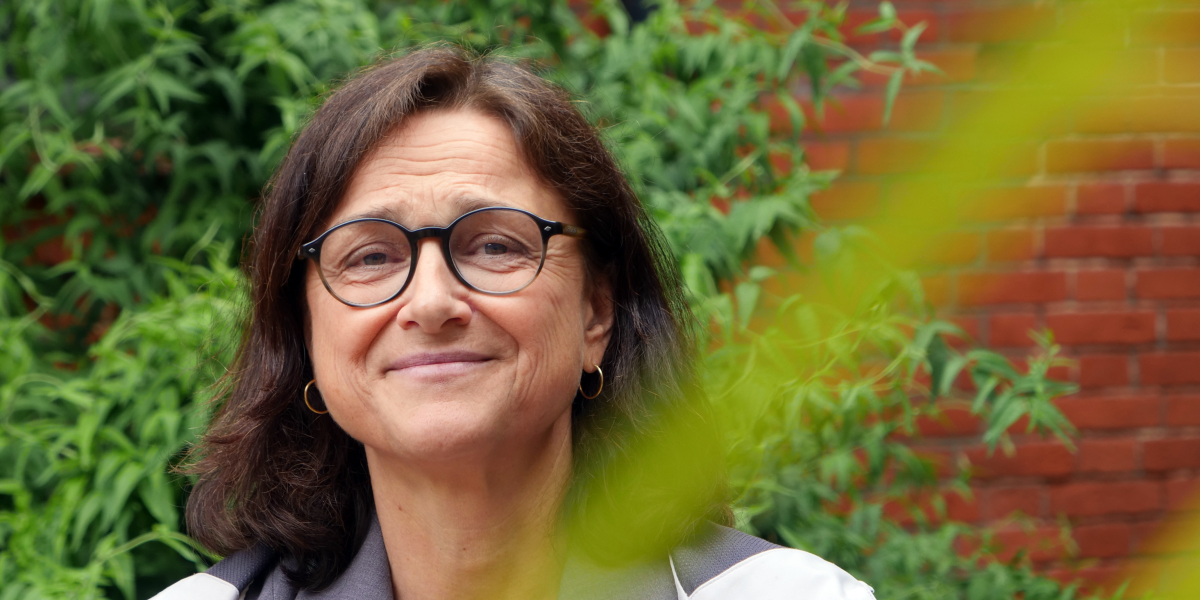Krsitn Aunan, CICERO
Protecting health and equity in a warming Europe
Heat is an evident cause of mortality among people with cardiovascular and respiratory diseases, with higher risks when combined with exposure to air pollution. Kristin Aunan, research director and climate scientist at CICERO, and her team have extensively studied these effects and evaluated equitable interventions to reduce their impacts.
Climate change is becoming increasingly evident, as shown by rising global temperatures. Kristin, her team and other external partners in an European project called Exhaustion have analysed 20 years of data from people in over 200 European cities, focusing on the effects of temperature especially in individuals with other diseases such as cardiovascular and respiratory diseases. The study confirmed a strong link between heat and mortality. They also explored the combined effects of heat and air pollution, particularly fine Particulate Matter (PM2.5 ) and ground level ozone (O3), and found a synergistic effect: excess mortality is higher when people are exposed to both heat and air pollution compared to exposure to heat alone. Their results indicate that southern and southeastern Europe experience higher excess mortality from these combined exposures, influenced by overall population health and other vulnerability factors.
“While heat stroke and heat exhaustion are often mentioned in discussions of heat stress, they account for only a small number of deaths. Most heat-related premature deaths occur in people with pre-existing cardiovascular or respiratory conditions”, Kristin explains.
“When you get overheated, the body tries to cool down. The heart needs to pump faster to get blood into the periphery. Sweating needs to be enhanced. All these physiological responses to heat stress can be very stressful for the body, and particularly if you have some comorbidities related to your heart or respiratory system, you are typically more vulnerable to heat”, she adds.
Equitable adaptation with greener spaces
Population growth and housing demands are reducing green areas in many European cities. With less green spaces, cities face stronger urban heat island effects, as asphalt and concrete absorb and retain heat. Research shows that parks and trees help mitigate these impacts, highlighting the protective role of urban greenery. To address the loss of space, architects are also experimenting with green roofs and walls.
“When you get overheated, the body tries to cool down. The heart needs to pump faster…The physiological responses to heat stress can be very stressful for the body”
As heat is becoming more evident, cities need to quickly adapt. So not only architects but also local authorities need to ensure that heat measures are equal and protect everyone. “When green spaces are developed, wealthier residents may disproportionately benefit—a phenomenon known as green gentrification—which can limit access for vulnerable populations. Local authorities need to address these issues to ensure heat adaptation measures protect everyone”, Kristin outlines.
And she adds, “people with low socioeconomic status are generally more vulnerable, partly because of poorer health and limited access to protective measures such as air conditioning. Factors like lifestyle and diet may also play a role”.
Protecting the most vulnerable to rising temperatures
Rising temperatures reduce productivity for both outdoor workers and indoor employees without air conditioning. Outdoor workers need protective measures including shade and shelter, regular rest breaks, and proper hydration to prevent heat-related health risks. For indoor workers, access to air conditioning is crucial. Although its use is expanding across Europe, it remains less common in northern regions, where rising temperatures have also been observed. Studies indicate that in northern territories days of extreme heat is associated with a 27% rise in respiratory mortality compared to the risk on moderately hot days. During extreme heat waves, high electricity demand can also cause blackouts, showing that reliance on AC alone is not sustainable. Besides, AC needs energy that generates emissions contributing further to warming. Researchers therefore emphasize the importance of adaptation strategies, including urban green space, climate-sensitive building design, and shading.
“When green spaces are developed, wealthier residents may disproportionately benefit, which can limit access for vulnerable populations”
Older adults, above 65, are also the most vulnerable, especially if they are isolated or lack access to care and hydration. While children and young people can also be affected, fatalities in these groups are far less common. Raising awareness and educating the public about heat risks are essential.
“Heat-related deaths result from a complex interplay of physiological, individual, and societal factors. Looking ahead, research will focus on assessing the effectiveness of different adaptation measures and ensuring that the most vulnerable populations are better protected from the growing threat of frequent and intense heat waves”, Kristin concludes.
Related projects
EXHAUSTION
Increasing temperatures and heat waves due to climate change, combined with air pollution, constitute major health risks, and could cause an increase in cardiovascular and respiratory diseases across Europe. EXHAUSTION (Exposure to heat and air pollution in Europe – cardiopulmonary impacts and benefits of mitigation and adaptation) aims to quantify the changes in cardiopulmonary mortality and morbidity due to extreme heat and air pollution (including from wildfires) under selected climate scenarios.
EXHAUSTION has its own project website at EXHAUSTION.EU
Health | Air pollution | Heat waves
